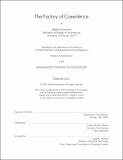The factory of coexistence
Author(s)
Konjicanin, Melika, M. Arch Massachusetts Institute of Technology.
Download1265046918-MIT.pdf (91.90Mb)
Other Contributors
Massachusetts Institute of Technology. Department of Architecture.
Advisor
Cristina Parreño Alonso.
Terms of use
Metadata
Show full item recordAbstract
Since the fall of Yugoslavia thirty years ago, Bosnia and Herzegovina's once booming industrial system has left a landscape of its skeletons. Each town in the country that had been oriented around factory life now houses a ruin - a constant reminder of what once was. The negative effects of the fall of the country's industrial system are experienced universally among its citizens, socially, economically, and environmentally. Once these industrial infrastructures brought prosperity to towns, though their environmental impact was neglected. Today they continue to exist on contaminated land, within the context of an ethnically segregated country, ruled by a nepotistic political elite. The complexity and corruption of the government's inner workings implies the lack of any system in place to protect both its citizens and their cultural history, which includes the factories. Twenty-five years after the end of the war, Bosnia and Herzegovina is still rebuilding itself (or in most cases, failing to). This thesis proposes a modest first step towards an alternate approach of revitalization through the active healing of an industrial ruin. The defunct factory building will serve as both a locus for conversations of reflection on the nation's past, and as a functional reminder that social, economic and environmental life cycles can be healed and renewed. The Factory of Coexistence is a new expanded architectural typology that reintroduces the industrial ruin back into cycles of life. Sited in the ruins of the first factory in Bosnia and Herzegovina and the first steel plant in southern Europe, the Factory of Coexistence exploits the transformative potential of the ruin in the rewriting of social, economic and environmental stories. In the Factory of Coexistence, architecture is a medium that reconnects us with the past, while acting in the present to transform the future.
Description
Thesis: M. Arch., Massachusetts Institute of Technology, Department of Architecture, February, 2021 Cataloged from the official pdf of thesis. Includes bibliographical references (page 117).
Date issued
2021Department
Massachusetts Institute of Technology. Department of ArchitecturePublisher
Massachusetts Institute of Technology
Keywords
Architecture.